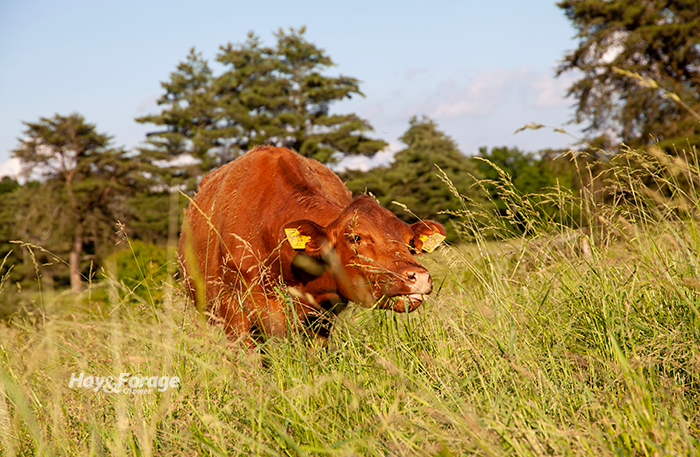Melatonin found to help negate fescue toxin |
| By Mike Rankin, Managing Editor |
|
|
 One more practice to add to the current list of fescue toxicity mitigation strategies for beef cattle may have been discovered. Researchers at the University of Arkansas (UA) have found that the common hormone melatonin improved calf gains when their mothers were fed the inexpensive additive during late gestation along with toxic fescue seed. The ergot alkaloids in toxic fescue are known to constrict blood vessels of animals that digest them. Brittni Littlejohn, a UA animal scientist, documented that pregnant cows consuming toxic fescue seed have a lowered uterine artery blood flow, which possibly limits nutrient supply to a developing fetus. As documented by Littlejohn’s research, calves born to cows that have consumed toxic fescue during gestation weigh less at birth and are about 90 pounds lighter at weaning compared to cows not exposed to the fescue toxin. The underperformance continues through the yearling stage, according to the animal scientist. Fescue seeds can have an especially high level of toxins. In her research, Littlejohn fed one test group of cows toxic fescue seeds during mid- to late gestation along with melatonin and one group without the hormone. Another control group was fed nontoxic fescue seed. Melatonin, which is normally thought to be associated with sleep-wake cycles, is produced by both plants and animals. “The melatonin additive tended to improve birth weights and significantly improved weaning and postweaning weights of calves whose dams consumed toxic fescue during gestation,” Littlejohn said. “We were able to recover over 70% of the loss in weaning weight by treating pregnant heifers with melatonin.” The researcher stressed that the additive was fed only in the diets of pregnant heifers during a 70-day window of gestation and not to their calves. Even so, the calves benefitted from the addition of melatonin to their mothers’ diets with improved weight gain throughout their development. “The calves are yearlings now and still showing benefits based on how their mothers were fed,” Littlejohn said. However, she cautioned that the results were still preliminary, and more work was needed to validate these initial findings. In addition, she hopes to investigate other means of administering melatonin, such as using implants. Littlejohn and her co-workers are also in the process of further evaluating factors that might play a role in why the differences in calf weight gain exist. She plans to evaluate muscle biology, feed efficiency, metabolism, immune function, and the microbiome. Recently, the animal scientist has received a provisional patent for the use of melatonin in cows to mitigate the effects of fescue toxicosis during gestation. |
